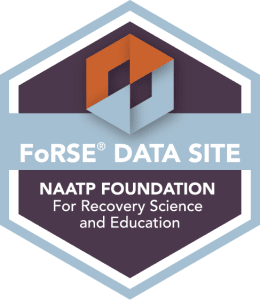If you believe you or your loved one may be at risk for suicide, get immediate help.
Included below are suicide hotlines you can contact:
The National Suicide Prevention Lifeline at 1-800-273-TALK (8255). All calls are confidential and they are available 24/7.
The National Hopeline Network, Suicide & Crisis Hotline at 1-800-442-HOPE (4673). Trained counselors are available to help you through a crisis.
Crisis Text Line, text the word HOME to 741741 to chat with a crisis counselor. This is free and your conversations are confidential.
Veterans Crisis Line at 1-800-273-8255, then press 1. You can also text 838255, or chat online.
Addiction and suicide are very closely linked. While depression is a significant factor that increases the likelihood of addiction and suicidal ideations and attempts, there are many additional links, including genetic makeup, brain chemistry alterations, and common risk factors. Suicide is also a risk of addiction and can even present itself in addiction recovery.
Over 50% of suicides are associated with drug or alcohol dependence. This percentage increases to 70% among the adolescent population. Additionally, at least 25% of people with addiction commit suicide. 1
Compared to the general population, individuals with alcohol dependence are ten times more likely to commit suicide, and individuals who use drugs are 14 times more likely to do so. Of suicidal deaths, approximately 22% involve alcohol intoxication, 20% include opiates, 10.2% involve the use of marijuana, 4.6% involve the use of cocaine, and 3.4% include amphetamines.2
Suicide is considered one of the United States’ most significant health epidemics, as it is one of the top leading causes of death in the country, especially among younger generations.
Among all age groups in the US, it is the 10th leading cause of death, and among people aged 10-34 in the US, it is the second leading cause of death. Almost 45,000 individuals in America died of suicide in 2016, with approximately one suicide every 12 minutes. Also, in 2016, 1.3 American adults attempted suicide. 3
One of the most common connections between addiction and suicide is their association with depression. A diagnosis of major depression increases someone’s likelihood of committing suicide and is the most common cause of suicide.4
A survey conducted in 2018 found that substance abuse is also more common in those who experience mental health issues, such as depression than those who do not.5
Individuals with mood disorders often use drugs and alcohol as a form of self-medicating to alleviate the negative emotions they experience. Excessive drug and alcohol use can eventually become a substance use disorder or drug addiction.

If someone with depression develops a substance use disorder or drug addiction, the severity of their depressive episodes is likely to increase. This increase in depressive symptoms can also increase their likelihood of suicidal thoughts and attempts.6
Symptoms of depression may also appear or worsen during the early stages of recovery from drug and alcohol addiction and can make the recovery process more difficult.
Without proper treatment for depression, these individuals may experience thoughts of suicide and may even engage in suicide attempts. Someone who simultaneously experiences drug addiction and depressive tendencies should choose a treatment option that focuses on both issues. 7

Addiction and suicide may also have a common genetic cause. Genetic factors, such as a family history of addiction or alcoholism, can create a higher likelihood that an individual will develop a habit. Similarly, a family history of suicide can increase someone’s chance of experiencing suicidal thoughts and attempting suicide.8
Depressive disorders may also result from genetic factors in an individual. In some cases, depression and severe depressive episodes can cause suicidal ideation and suicide attempts. Depression is one of the leading causes of suicide and also a cause of addiction. 8
Addictive substances create changes in brain chemistry that can increase the likelihood of suicidal thoughts and even suicide attempts. Substances of abuse manipulate the neurotransmitters in the brain that affect mood and judgment.
These alterations create feelings of apathy or low motivation and general hopelessness in the individual using the substances. These symptoms can ultimately lead to suicide if the individual does not receive proper treatment for addiction and depression.9
Substances can also create alterations in brain chemistry that result in poor judgment. These changes may cause someone with an addiction to engage in a suicide attempt out of impulse, without a plan in place. If someone suffers from an addiction and suicidal ideations, they are at high risk of carrying out an impulsive suicide attempt.

Having a strategy is usually a key indicator that someone may attempt suicide, so it is important to note that an addict suffering from poor impulse control may attempt suicide without exhibiting the warning sign of a suicide plan. 10
Suicide and addiction also share several common mental health, environmental, and historical risk factors. It is essential to understand that the presentation of a single risk factor does not predict with certainty that the individual will develop an addiction, engage in suicide attempts, or both.
Someone with a combination of many of these risk factors has an increased likelihood of addiction and suicide attempts, but it is still not guaranteed that they will occur.
While the presence of one or multiple of these risk factors cannot predict with certainty that an individual will develop an addiction or attempt suicide, it is crucial to take it very seriously if someone shows multiple risk factors.
Additionally, some risk factors are severe, even if it is the only factor present. For example, if someone is presenting suicidal thoughts, it is essential to get proper treatment for the individual. Past suicide attempts place someone at very high risk for later attempts when triggered. In these cases, treatment is vital. 15
If you are concerned that someone you love may engage in a suicide attempt, there are many warning signs to keep your eye on.
Your loved one may not always verbalize suicidal ideations; however, there are many additional warning signs of suicide. These warning signs include what they talk about, changes in their behaviors, and certain moods.
Addiction and thoughts of suicide do not always guarantee that someone will attempt or commit suicide. While their risk is high, open, honest, and non-judgmental, conversations with family and friends can begin the process of preventing any suicide attempts.
Talking about suicide, removing access to objects or chemicals that can cause self-harm, and providing support, including treatment options, are a few ways loved ones can help prevent suicide.16
Contacting a mental health professional is the best way to help someone struggling with addiction or suicidal ideations. For addiction issues, proper treatment, including treating withdrawal symptoms, staying in treatment for more extended periods, and preventing relapse, is the best way to recover from an addiction.

Treating withdrawal symptoms such as restlessness, insomnia, depression, and anxiety make it easier for the individual to resist any temptation to engage in drug use. Additionally, different medications and therapies can help the brain adapt without drugs and prevent future relapse.17
It is also essential to treat both addiction and depression if someone with an addiction is also at risk for suicide. Additionally, someone in addiction recovery may be at higher risk of developing depression during a period of prolonged abstinence.
Fortunately, Bridging the Gaps offer treatment programs that support addiction and mental health issues with therapies conducted by mental health professionals. Continued aftercare is another excellent way to prevent relapse, potential depression, and potential subsequent suicidal ideations.
Contact
31 S. Braddock Street
Winchester, VA 22601
Phone: 540-535-1111
Fax: 540-450-1205
admissions@bridgingthegaps.com
Addictions
Modalities


